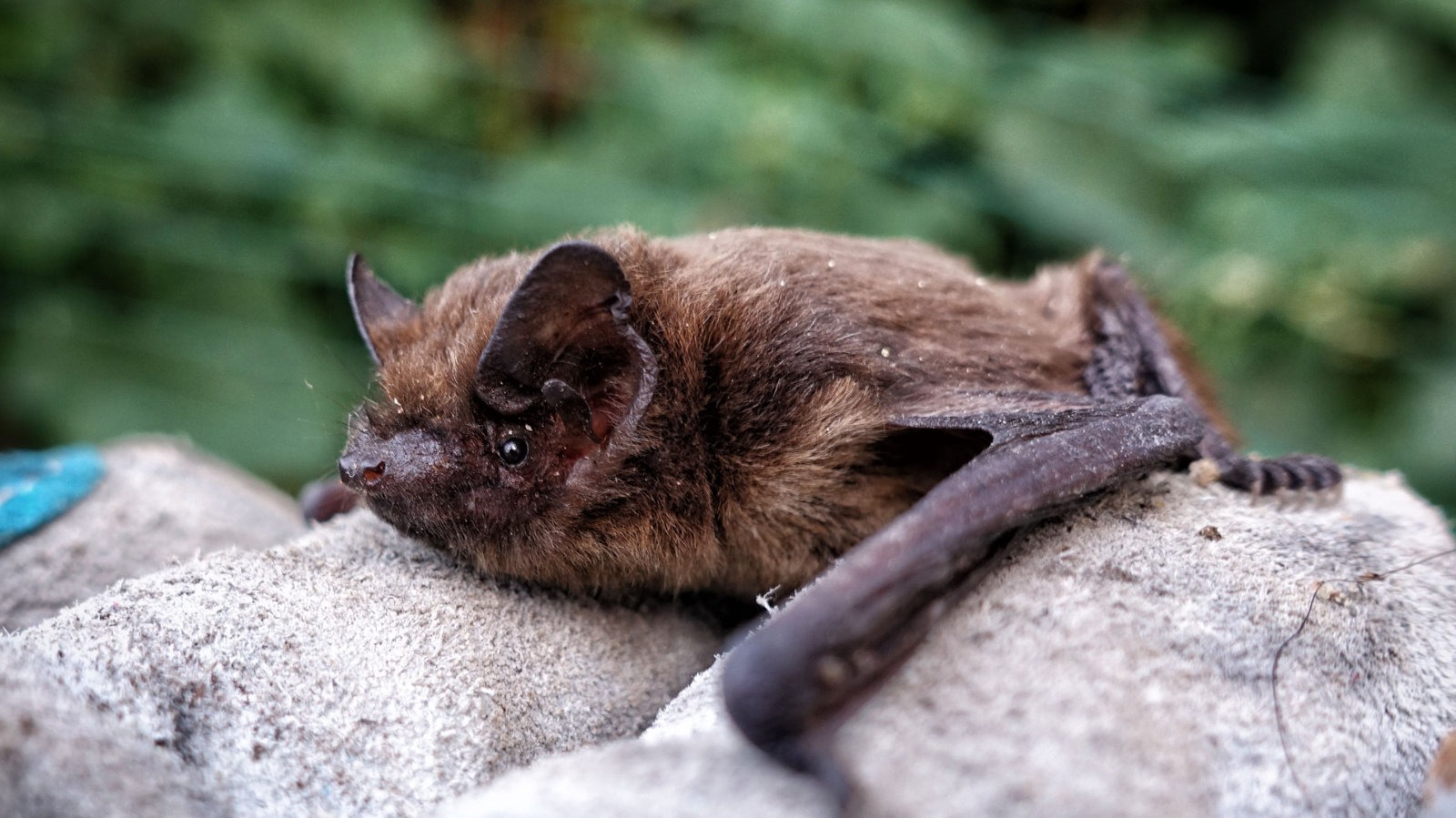The common pipistrelle is the smallest of the UK bats weighing a mere 5g. With a wingspan of up to 25cm and a brown furry body smaller than your thumb they are much smaller than they appear in flight.
All bats have slightly different flight patterns, a bit like planes – you can tell a jumbo from a jet.
Pipistrelles are like jets; they fly fast and erratically, zooming around catching lots of small insects, following lines on the ground such as hedges or walls so that they don’t lose their way.
Overview
The pipistrelle is our most common bat found all over the UK. Pipistrelle roosts tend to be some of the biggest with up to 200 bats snuggling up together in one small area.
They are one of the first bats to come out in the evening, not long after the sun has set, just as the midges are starting to bite!
And lucky that they do, a roost of pipistrelle bats will eat thousands of insects every night including moths and flies as well as harmful insects such as woodworm and mosquitoes.
Common pipistrelles love roosting in houses, they’re not fussy whether they are old or new, anywhere that is warm and dry will do. Your attic for instance – all they need is a tiny crack to squeeze through and they’ll happily settle in if undisturbed.
Some people worry that bats will chew their wires and cause damage in their attics but really, other than a few dusty droppings and maybe a bit of chattering at odd hours, they won’t cause you much trouble.
In the Garden
Plant flowers that attract insects, particularly night scented plants and anything bushy that will provide sheltered corners where insects can swarm.
Lines of trees, walls or hedges will also help attract bats as they tend to fly along landscape features to help remember their way around.
Bats also need water, a small pond or even a birdbath will do. The bats will swoop low across the surface and sip from it as they go.
Don’t block up all the holes on the outside of your house (obviously don’t let your house fall down!), keep some gaps open especially if you have seen bats coming from your roof. Holes need only to be a few millimetres wide for a bat to crawl in and rest its weary head after a long nights hunting, it’s the least you can do in return for pest control in your garden!
Interesting fact
When a common pipistrelle homes in on its prey (a juicy fat mosquito) they make a really fast sound like somebody blowing a raspberry! You can hear this quite clearly on a bat detector.
